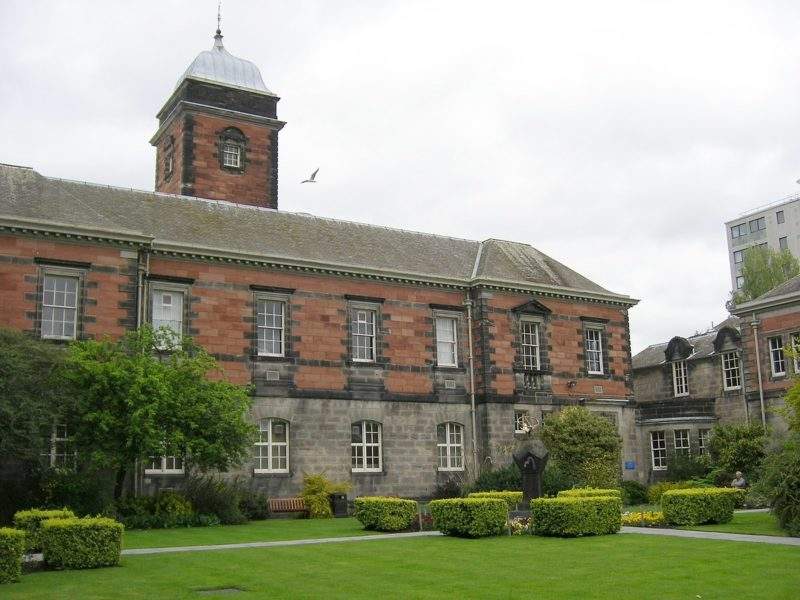
Clarivate Analytics has named Dundee University the world’s most influential pharmaceuticals research institution in its State of Innovation report, which ranked the university far above both MIT and Berkeley for the period 2006-2016, with Edinburgh University the only other UK representative in the top 10.
According to the university’s principal and vice-chancellor Professor Sir Pete Downes, this is down to a combination of its schools of medicine and life sciences’ longstanding relationship with Big Pharma, the interdisciplinary nature of their work and their strong focus on translating fundamental research into meaningful clinical outcomes.
He should know. Since he first joined the faculty as a professor of biochemistry 28 years ago, after which he became head of department and, later, dean of the faculty, he’s played a pivotal role in both shaping the set-up of the schools of medicine and life sciences and nurturing their relationship with industry.
“Before I came to the university, I had worked for 11 years in the pharmaceutical industry and at that time it was quite a bold move to appoint someone out of industry to work in a very strong academic setting,” he recalls.
It was the first step in establishing what has since become a key element of the schools’ culture – the recognition of how collaboration with the pharmaceutical and biotech industries could help them achieve their objectives, when approached from a standpoint of mutual respect.
Big pharma: more than a cash cow
“We didn’t want to collaborate with the pharmaceutical industry just because they had money – we wanted to collaborate because it offered a vehicle for our IP to be developed and utilised and it gave us access to facilities and insight into the drug discovery process that was important to us,” Downes explains. “We appreciated what the relationship could bring to us, rather than seeing it as a cash cow – so it was a much more effective relationship.”
How well do you really know your competitors?
Access the most comprehensive Company Profiles on the market, powered by GlobalData. Save hours of research. Gain competitive edge.

Thank you!
Your download email will arrive shortly
Not ready to buy yet? Download a free sample
We are confident about the unique quality of our Company Profiles. However, we want you to make the most beneficial decision for your business, so we offer a free sample that you can download by submitting the below form
By GlobalDataThis led in 1998 to the establishment of a major collaboration – which is now recognised as the longest-running and largest between any university and the pharmaceutical industry anywhere in the world – the Division of Signal Transduction Therapy (DSTT).
Founded by Downes and his colleague Professor Sir Philip Cohen, the DSTT works to help identify new drug targets and then accelerate the early phase development of improved treatments for major global diseases. “It was specifically targeted at an area of research where we have expertise – kinases – and has driven research programmes, projects and drug discovery activity in several of the world’s leading pharmaceutical companies,” Downes says.
Aligning disciplines
Another important factor behind the success of Dundee’s schools of life sciences and medicine is the interdisciplinary nature of the work that goes on within them.
“At the turn of the millennium, when I was dean of the faculty of science and engineering, I realised we needed to merge all of our biology discipline and focus everything into a molecular and cellular approach,” Downes says.
“This brought what was then a small and rather failing chemistry department into the life sciences domain and meant we were able to focus chemistry into medicinal chemistry and in doing so support our drug discovery capabilities whilst at the same time increasing the number of chemists we had working here. The chemistry department was failing because it was trying to be too broad but once it was aligned with biology, it was able to thrive.”
Today, Dundee’s school of life sciences houses close to 1,000 people in eight separate research divisions, all working intensely on biological problems at the cellular and molecular level. This includes around 80 principle investigators who generate funds from external sources of around £50m per year.
Translating fundamental research into meaningful clinical outcomes
Two miles down the road, Dundee’s school of medicine, which is located in what was originally Europe’s largest teaching hospital, is widely known for its world-leading research in areas including diabetes, cancer, cardiovascular disease and neuroscience.
But what really sets it apart, believes Downes, is the culture within it that’s focused on putting the knowledge generated through its research into practice, whether that’s in the clinic, through drug discovery, through company formation or through collaboration with industry.
It’s a culture, he explains, that has been in force since more than 40 years ago, when the school became the first institution in the UK to establish a medical records system that allowed them to track, for example, relationships between regimes or treatments and patient outcomes over time.
“You may not associate medical informatics with Dundee, but it’s probably one of its most important contributions,” Downes says. “These approaches are now being adopted generally across the UK and elsewhere, but it was done here first.”
More recently, in 2006, the university also established its own dedicated drug discovery unit, which is now the size of a medium-size biotech company. Its leading story so far has been the development of a compound to treat malaria, which is currently in field trials.
“If as successful in man as it has been in animal studies, it will be both a one-dose cure and prevent reinfection and could transform the treatment of malaria,” Downes says, adding that the most important part of the drug discovery unit’s success is probably the fact that many of its leaders have been appointed out of the biotech sector, not academia.
Only the beginning
Dundee was the global front-runner by a significant margin in Clarivate’s survey, which was compiled by indexing more than 1,800 journals, as well as proceedings papers, book chapters and other materials, plus information on over 71 million patents.
The university was also found to be the best in the UK at influencing innovation, according to a report published by Nature earlier in the year, and fifth in the UK among Reuters’ ‘Most Innovative Universities’, behind Cambridge, Imperial, Oxford and Manchester.
While Clarivate’s analysis was focused only on pharmaceutical research, the other two took into account the whole range of research areas covered by each university, an important distinction, Downes emphasises. “When the lens is focused on the pharmaceutical industry, we come out number one in the world,” he says, adding that the university’s level of influence is not likely to decline in the future.
“Academics are now coming to work here because they recognise us as a centre of excellence. One of our real new stars to look out for is Alessio Ciulli, a young chemical biologist, who is devising new ways to identify drugs that interfere with protein-protein interactions. Even though he’s very early in his career, he already has huge investment from the pharmaceutical industry. The mantle is being passed on to young and extremely capable individuals – I’ve got every confidence this will continue.”





Related Company Profiles
Berkeley
Clarivate Plc
Edinburgh University
BIG PHARMA LIMITED